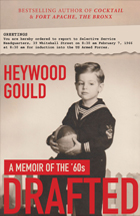MADINAT ZAYED, United Arab Emirates, May 23…Spiking oil prices are causing bankruptcy, starvation, insurrection and social dislocation all over the world. But one small group has reason to rejoice–the even-toed ungulate, better known as the camel.
Gas-guzzling tractors, trucks and SUV’s are lying idle as farmers, traders and smugglers throughout the Middle East, India and Pakistan return to the camel as their primary source of transportation.
Once honored as “the ship of the desert,” the camel was lumbering to extinction in swiftly mechanizing societies like India. Its population, once in the millions, had declined to 450,000, the Financial Times reports.
“Two years ago a camel cost little more than a goat, which is nothing,” says Ilse Kohler-Rollefson of the league for Pastoral Peoples.
“We had started to see camels, even females ones, slaughtered for their meat,” says Hanuwant Singh of the Lokhit Pashu-Palak Sansthan, a non-profit welfare organization for livestock keepers. “Now they are replacing the tractor.”
Simple economics have returned the camel to favor. A healthy male with a life expectancy of 60-80 years cost about USD$200 a few years ago. Now the price has risen fivefold to almost USD$1,000, but that is still a bargain compared to the USD$4,000 for a stripped-down tractor, which gets about five miles to a gallon using high test gasoline.
But the rise of the camel has its critics. Paraquat Bongh of the South Asian Progress Party, says the use of the camel is a “step backwards to the Dark Ages.” He claims that the oil boom has “recreated the medieval society of sheiks and shepherds.”
“The very rich live in an atmosphere of high tech indulgence, while the poor have been sent five hundred years back in time to primitive tools and beasts of burden,” Bongh says.
Once despised as an unclean, irritable beast the camel’s social status has improved. The Raika, the pastoral caste that breed females, have found a market for camel handbags and camel bone jewelry. Camel milk has become a delicacy. Branded as “the gold of the desert” it is much prized for its curative and aphrodisiac qualities.
But Bongh scoffs at these claims. “Everything is peddled to the masses as an aphrodisiac–dates, nuts, chick peas. If you believe this you will be in a constant state of sexual excitation and unable to see how you are being exploited…”
Bongh recently brought his protest to a camel beauty contest in this lush oasis of the emirate of Abu Dhabi. Camels have once again become symbols of prestige to the rulers of the Gulf. Five judges are assigned to grade camels on necks, heads, lips-which are especially important, noses, humps and feet.
Sheik Hamdan bin Mohammed bin Rashid al-Maktoum, heir apparent to ruler Sheik Mohammed, bought 16 pedigree camels for USD$4.5 million after a spirited round of bidding against other Emirati potentates. He paid USD$2.7 million for the winner of the contest.
As the auction ended Bongh appeared in the crowd of sheiks.
“Do you plan to race your prize camel, your Highness?” he called.
A spokesman hurriedly assured reporters that Abu Dhabi’s ruling family held this festival as a means of preserving the nomadic ways of their desert ancestors.
“Will you put one of your slave jockeys on the camel?” Bongh shouted. “One of the six year old boys your agents bought from an impoverished South Asian or African family..?”
A phalanx of black-suited security officers, muttering into mouthpieces, quickly surrounded Bongh.
“Is this how you preserve your nomadic ways, by enslaving little boys?” Bongh screamed as they led him away.
At sunset reporters saw a man tied to a camel on one of the ancient roads leading to the desert. He couldn’t respond to their questions. His tongue had been cut out.
